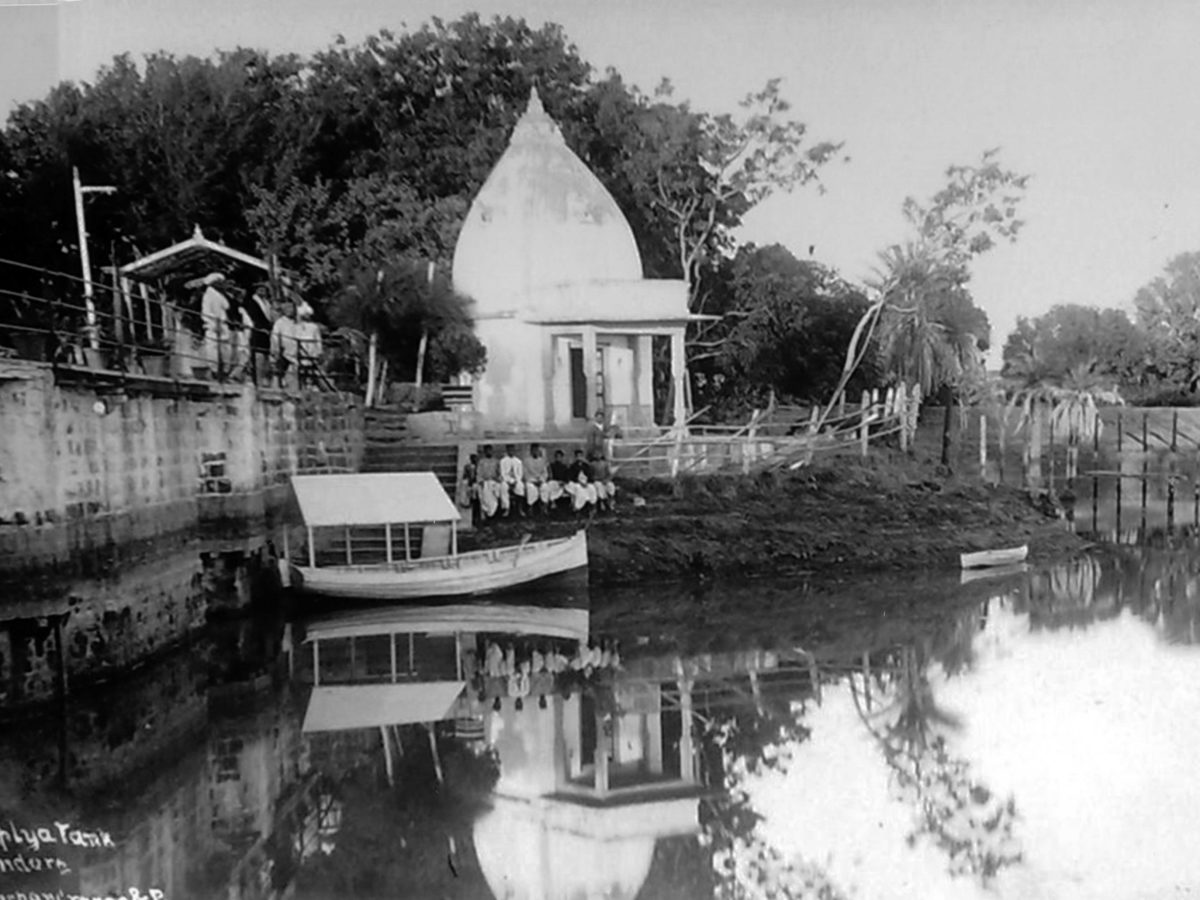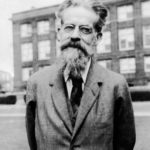
When Lutyens was busy creating and shaping the new national capital— Delhi in the early  years of 20th century, a lesser known innovator was working in different Indian cities to plan them scientifically. He used a unique socialistic approach in urban planning. Till 1916, he had started working on designing of a few cities or he had already submitted his plans to the concerned Maharaja or to the municipal body.
years of 20th century, a lesser known innovator was working in different Indian cities to plan them scientifically. He used a unique socialistic approach in urban planning. Till 1916, he had started working on designing of a few cities or he had already submitted his plans to the concerned Maharaja or to the municipal body.
Sir Patrick A Geddes (Oct 2, 1854-April 17, 1932) was a globally acclaimed urban planner, sociologist, botanist and educationist. Around 100 years ago, Indore got lucky to have him as its planner. He created many institutes and designed many cities as diverse as Jerusalem, Colombo, Dhaka, Lahore and many Indian cities including Indore.
A man of many talents, Sir Geddes was invited by Maharaja Tukojirao-III to Indore to suggest urban design for the evolving capital city of Holkars in the early 20th century. Historical records suggest the versatile Scottish urban planner began his work for planning Indore towards at the end of 1914 and submitted his report to ‘Durbar of Indore ‘ in 1918. In 1916, he finalized the urban plan for Indore. So it’s a 100 years of that event (being celebrated in Indore with the launch of reproduced original master plan). The year 2016 is quite a significant year from the perspective of urban planning in modern India. While town planning as a science and art had developed many centuries ago, the pre- independence phase of 20th century, to me, is quite eventful. Most of the major Indian cities including New Delhi, the national capital, were designed or redesigned during this time. It was in 1911 that King George V, with Queen Mary, laid the foundation of New Delhi. Edwin Lutyens, the British architect, designed New Delhi during 1912-1930. It was in the year 1912 that New Delhi was chosen over Calcutta as the capital.
Innovative urban vision
Besides Indore, he helped the Maharajas of Baroda, Kapurthala, Balrampur,Patiala and municipal authorities of Nagpur, Lucknow, Calcutta, and Madras Presidency towns like Bellary, Coimbatore, Salem and Vizagapatam plan their cities. He completed work on Lahore in 1917, on Lucknow in 1916, Dacca (Dhaka) in 1916, Baroda in 1916 and so on. Between 1914 and 1920 he completed major foundation works of the aforementioned cities which grew in importance in later years due to one reason or another.
He worked fully or partially on nearly 50 cities in the world and close to 30 cities and towns in India. What a hardworking and talented man he may have been! Sir Geddes was surely not the run- of-the-mill urban planner. He always had a social approach (place, work, folks or family) on the top of his mind, besides environment. He put people in the centre of his planning process taking a family as central biological unit of human society from which all else develops, and then designed the city, including Indore. “His comprehensive philosophy was aimed at coordination of man with environment which he described as the new humanism”.
(HV Lanchester/1945) With this aim in view, he became an amateur in the best sense of the word, of all the arts and sciences, and endeavoured to employ his knowledge in raising the standard of living for all with whom his activities brought him in contact. In this, his psychological instinct put him at a great advantage over those who, having every good intention, were not similarly qualified to identify themselves with the mental outlook of varying social and racial types, and he gained their sympathetic support where those not so equipped had failed to secure it.
I suppose today’s urban planners have a lot to learn from him, though the scope, complexities, political meddling and rising population have together posed tougher challenges before the 21st century city planner.
Geddes, despite his western education and exposure, understood Indian society and lifestyle of average Indians very well. He is credited with introducing the concept of ‘region ‘ to architecture and always advocated planning for open spaces and plantation of trees. Imagine when Indore’s population was not even one lakh, this forward looking scholar- demographer had thought of public health, drainage and openness of the city. His plan document therefore, must be read by today’s historians, students of architecture, urban planners and environmentalists to know how a city should be designed. His principles of planning still remain relevant.
Just have a look at what Geddes said in his report about the cotton capital of those days, Indore: Here in Indore jute does not threaten us, nor do linen or wool, offer their larger promise. To make the best of cotton; that is here and now, this city’s problem and task.
How is light to be found on this? What can western example and warnings teach us? And what eastern tradition and insight can we find? What are the ways and the means of doing all this?
He goes on to write: “the planning of Naya Indore is thus a matter for far more than its present planner. It concerns the whole city; not simply “capital and labour”, but every capitalist, every labourer too. For only in the measure of their effective cooperation, and not merely towards dividends and wages, but towards general well-being, can any planning meet with real and enduring success. Wise and vigilant municipal governments, and state government also, must do their parts, but the main task will remain for that effective citizenship, which these can but seek to support, to encourage and inspire.” “It is of course not in the temperament of the town planner necessarily a hopeful one-to prophecy evil. Yet it is his duty not only to guard against those which careful planning may exclude, but to add warning as regards those which lie beyond his power”, he says in his voluminous two-part report to the Holkar Maharaja.
Health planning
Those were the days when plague was quite prevalent in India, so Geddes sought permission from Maharaja Holkar to first clean up the city and kill rats and burn them on the outskirts of Indore. As an urban planner he laid extra stress on public health and hygiene as is seen in his many reports. Considering his grave concern about cities’ cleanliness, he was actually made the ‘Maharajah’ of Indore for one day with all powers of the ruling King of Indore, a rare happening in Indore’s history. He made many trips to Indore between 1914 and 1918 and then laid the basic foundations of urban planning. What he submitted to Maharaja Holkar was the first scientifically made urban plan of this city.
It has almost completed 100 years and it’s time for us to celebrate the wonderful and solid work he did in times when there were no such terms like ‘Urbanisation’ or ‘Smart City’ in vogue. He did not get the share of publicity or acclaim in India as did Edwin Lutyens of Delhi or Le Corbusier of Chandigarh, but Sir Patrick Geddes has his name firmly ingrained in the town planning history of India, there should be no doubt about it.

